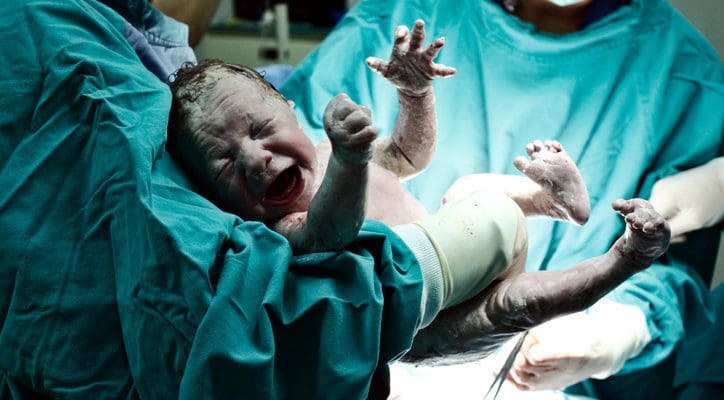
Overcoming, childbirth is probably the most difficult period in a woman's motherhood. Equipping yourself with essential knowledge about the characteristics of each stage of childbirth is very important for the safety of pregnant women and fetuses.
In order for your family's little angel to be born smoothly, you need to understand each stage before, during and after labor. The following article will provide mothers with lots of useful information to get the most thoughtful preparation for each stage in the childbirth process.
A mother will usually go through 3 basic stages:
Labor: the cervix opens about 10 cm;
Childbirth: fetus turns its head down to the vagina and comes out of the womb;
Postpartum: the placenta is pushed out.
The stage of labor
If this is your first birth, this stage will last from 6 hours to 36 hours. Before a woman gives birth, the cervix is usually long and thick. During the first hours, the muscles of the uterus contract vigorously to help soften and narrow the cervix, from which the cervix can expand and open as much as possible.
During labor, the mother will experience the following symptoms:
Contractions: some contractions may be moderate, making you feel pain in each burst. Others can have severe cramping and cause more pain. The contractions are initially short and last for 30-40 seconds and do not follow a regular cycle. Once the contractions have been going for 5 minutes or more, the mother's body is ready to deliver her baby;
Increased vaginal discharge: mucus may be accompanied by a lot of blood production. This happens the day before the birth or a week before that;
Amniotic fluid rupture: the amniotic fluid that surrounds the baby breaks so the baby can come out.
Childbirth stage
Stage 2 begins when the cervix is fully open and the baby's head bends down and out of the uterus and into the vagina (or birth canal). The mother's task at this time is to get the full strength and determination to push and push the baby out of the birth canal. This delivery takes about 30 minutes to an hour or more. However, this stage 2 can also be longer if the doctor uses an epidural on the woman to relieve the pain.
A small number of women at birth need assistance with obstetric devices such as a forcep or a ventouse. Depending on the situation of each woman, the obstetrician will choose the most suitable method.
Postpartum period
The last stage in the mother's journey of birth is the period of pushing the placenta out. This phase can happen in two ways:
Nature. This way, the doctor will observe the placenta separating from the uterine wall and ask the woman to gently push to push the placenta out naturally. This may take about 1 hour after birth. In the process of waiting to bring each other out, mothers need to breastfeed immediately while holding the baby. Direct skin contact is the best medicine to help mothers feel calm and less stressed. This is also the most wonderful time when the mother can see the form that she has brought so badly for the past 9 months and 10 days;
Use a stimulant. The doctor will inject a dose of ecbolic (fertility enhancer) into the woman's leg when the baby's shoulder is exposed. Ecbolic works to promote placental separation and helps to regulate uterine contraction to minimize blood loss and support the uterus to return to an elastic state.
Going through is probably the most arduous journey for a woman to become a mother. In addition, pregnant women need to equip with information to understand more about the child's horoscope and age so that they can name their baby . Hopefully, with the above sharing, mothers will partly know the characteristics of each stage to have the best preparation for the upcoming birth.












